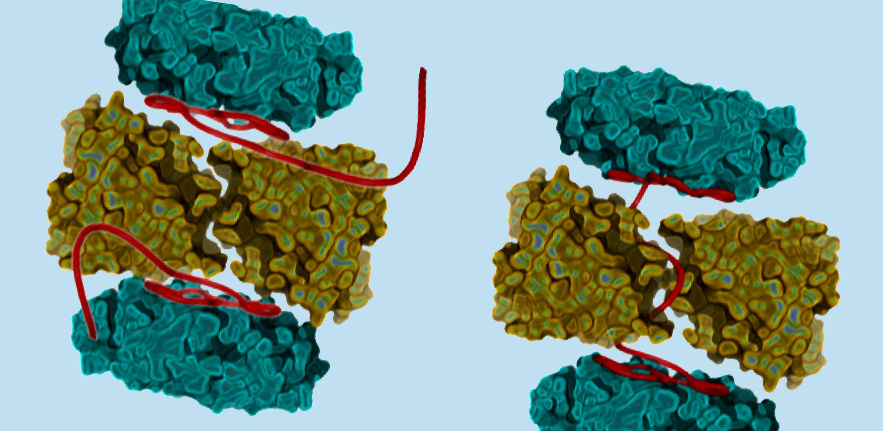
The Luisi group, and collaborators, have published a new paper in the journal eLife on how Hfq and Crc proteins cooperate to silence groups of genes in P. aeruginosa.
Living things can adapt rapidly to changes in their surroundings by switching whole groups of genes on and off. These responses must be controlled carefully, and they are often coordinated by regulatory proteins working together. Within a cell, the coded information in genes is copied to create molecules called mRNAs, which are then translated to produce proteins. Stopping the cell from reading the information in mRNAs is one way of shutting down specific genes.
Pseudomonas aeruginosa is a species of bacteria that can infect humans and can cause cases of sepsis and pneumonia. It changes the activity of its genes in response to its environment. For example, certain genes are only active inside a human host. This allows the bacteria to make the best use of available nutrients and energy. In these cells, two proteins named Hfq and Crc cooperate to silence groups of genes. They do this by stopping the cell from reading specific mRNA molecules, but how they do this is not fully understood.
By using a technique called cryo-electron microscopy, Xue Yuan Pei, Tom Dendooven, and collaborators, studied Hfq and Crc attached to mRNAs. The results show that two groups of six Hfq molecules and two Crcs attach themselves to two mRNA sections to create a structure that stops an mRNA from being translated into a protein. Since the structure only forms with certain mRNAs, the effect is specific to certain genes. The structure needs both Hfq and Crc to work together, which means it only forms in specific situations; when the affected genes are not needed.
P. aeruginosa is highly antibiotic resistant and new drugs are urgently needed to control infections. Understanding how this disease-causing bacterium controls its genes could lead to new treatments. The mechanisms of gene regulation are also common to many other forms of life so may also aid the wider understanding of how cells adapt to rapidly changing environments.
